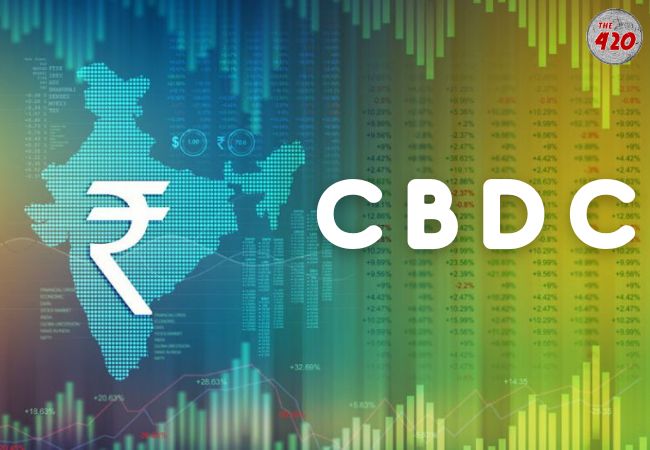Policy Watch
RBI Launches India’s First Digital Rupee: All You Need To Know About CBDC And How Will It Work

NEW DELHI: The Reserve Bank of India (RBI) on Tuesday launched the Central Bank Digital Currency (CBDC), also known as the digital rupee, following months of discussions and grapevine around the subject.
Widespread discussions have taken place since Finance Minister Nirmala Sitharaman announced in her Budget 2022 speech in February that 2022–2023 would see the introduction of the digital rupee.
In the first of two phases, the digital rupee (e) would be introduced to the wholesale market. In the second phase, expected to occur within a month, the digital rupee will be introduced to the retail sector in limited user groups of customers and merchants.
According to the RBI, nine institutions would participate in the pilot: State Bank of India, Bank of Baroda, Union Bank of India, HDFC Bank, ICICI Bank, Kotak Mahindra Bank, Yes Bank, IDFC First Bank, and HSBC.
ALSO READ: Cyber Crime Helpline By MHA: Now 155260 Is 1930 To Report And Prevent Cyber Fraud
CBDC explained
The RBI defines CBDC as a digital legal tender issued by a central bank. “It is identical to fiat money and can be exchanged for one-for-one. Only its appearance is different, according to the RBI’s website.
The CBDC is essentially the digital version (in electronic form) of fiat currencies; for India, this would be the rupee, its native currency.
In explaining the distinction between a digital rupee and a mobile wallet, a government source was quoted as saying, “In the event of a digital rupee, instead of carrying a note, you would hold a digital currency in your phone, which would be held by the central bank and transferred to any retailer. It is backed in full by the sovereign.
The RBI indicated that it would appear as a liability (circulating money) on the balance sheet of a central bank.
Despite being inspired by Bitcoin, CBDCs are distinct from crypto assets, which lack ‘legal tender’ status and are not issued by the government.
Numerous nations have expressed interest in CBDCs, but just a handful have advanced past the pilot stage in establishing their own CBDCs. According to the RBI website, a 2021 poll of global central banks indicated that 86% were investigating the potential of digital money, 60% were experimenting with the technology, and 14% had implemented trial programmes.
ALSO READ: Step By Step Guide: How To File Cybercrime Complaint Online In India
How will CBDCs be advantageous?
There are numerous advantages to using a CBDC. Last year, Minister of State for Finance Pankaj Chaudhary informed Lok Sabha, “Introduction of CBDC has the potential to bring major benefits, including reduced reliance on cash, higher seigniorage due to lower transaction costs, and reduced settlement risk. The introduction of CBDC could also result in a more secure, trustworthy, regulated, and legal tender-based payment option.”
As CBDCs exist in digital format, the reliance on paper will decrease, which will benefit the environment.
The blockchain architecture, which makes CBDC payments irreversible and rapid, is an additional benefit of CBDCs over ordinary digital transactions. This decreases the settlement risk associated with funds leaving your account but not reaching the intended recipient. In a system where inter-bank payments are so prevalent — where the sender and recipient have accounts at separate banks — this is of special relevance.
The adoption of CBDCs may potentially accelerate the transition to a cashless economy. Using CBDCs will bolster the government’s push for cashless transactions and alter the banking landscape for the better.
Furthermore, if more individuals choose CBDCs, cross-border remittances would benefit. Overall, the cost of transactions for businesses and the government would decrease.
Follow The420.in on
Telegram | Facebook | Twitter | LinkedIn | Instagram | YouTube
